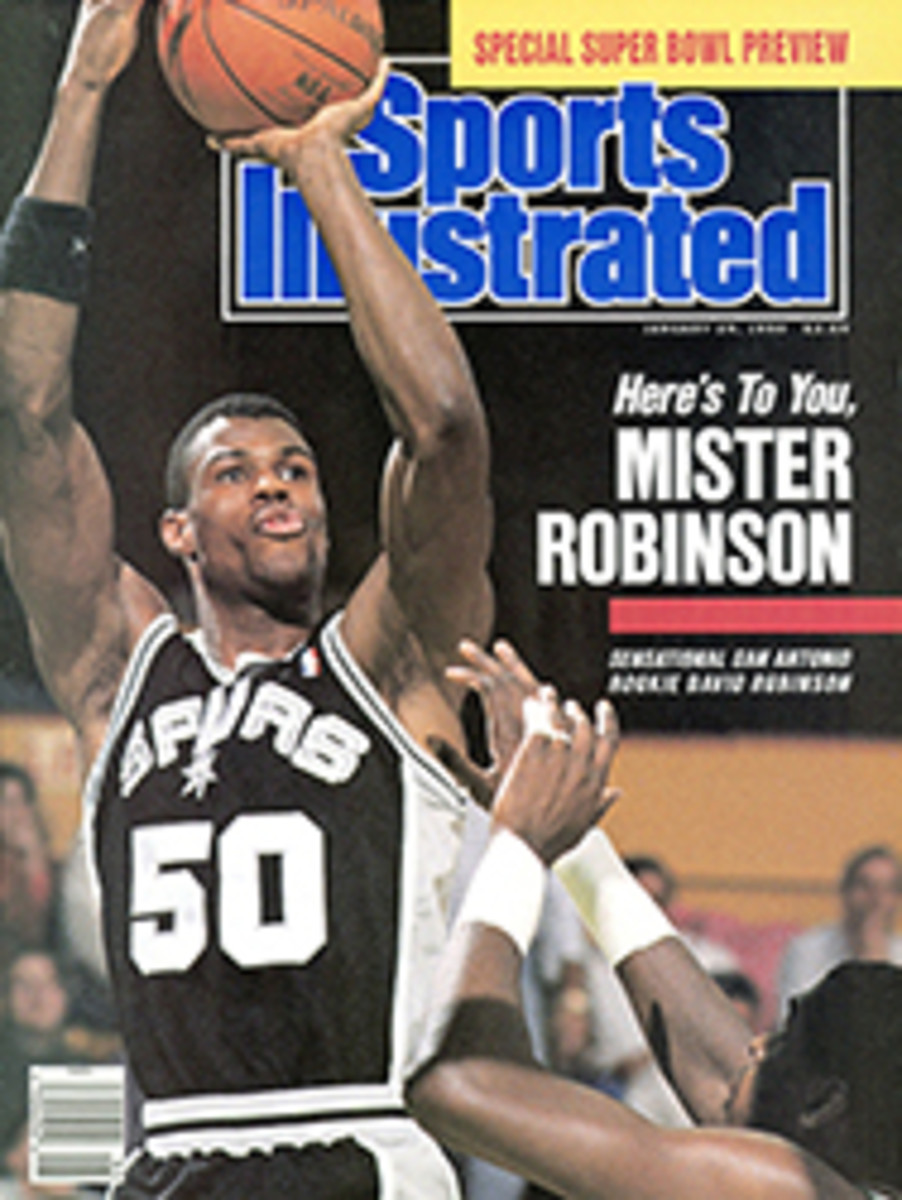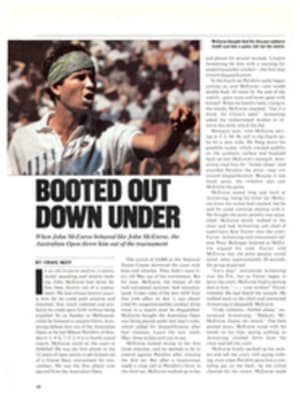
NOW THE FAT'S IN THE FIRE
On Sunday night, Jan. 14, Less than 24 hours before he would knock out Gerry Cooney at 1:57 of the second round of their heavyweight bout in Atlantic City, a nervous George Foreman phoned his wife, Joan, six times. Finally, at 2 a.m., Joan told him, "George, I love you very much, but I'm tired. I've got to go to bed."
On Tuesday morning after the fight, two hours of sleep and five more calls to Joan, Foreman flew to New York for a pastrami sandwich and to tape an appearance on the David Letter man show. That night he caught an 8:15 flight home to Houston. There Joan and their eight children surprised him with a birthday cake. "But they had already eaten all they wanted of it," says Foreman with a laugh. There was no room for 41 candles.
Between talking and eating, two of his favorite pastimes, the 6'4", 253-pound Foreman pursued a third passion, a bout with world champion Mike Tyson. Since emerging in March 1987 from a 10-year retirement, Foreman, the heavyweight champion from January 1973 until October '74, has won 20 straight fights, 19 by knockout, against a motley assortment of noncontenders. That label fit Cooney as well. Cooney's credibility as a contender vanished when he all but disappeared for two years after Larry Holmes, the WBC heavyweight champion at the time, knocked him out in the 13th round in June '82. Since then the 6'7", 231-pound Cooney had boxed fewer than 12 rounds before facing Foreman, and none since the much smaller Michael Spinks separated him from his senses in the fifth round in June '87.
"I can't fool around with this guy, because he is a murderous puncher," Foreman told his followers with a straight face in the dressing room before the bout. Then Foreman, who became a lay preacher in 1977 after a loss to Jimmy Young, said a prayer: "Sweet Jesus, don't let it end tonight."
There wasn't much chance of that. Still, the first round was nearly all Cooney. A natural lefthander, he came out fast with a hard jab and soon was lathering Foreman with his feared left hook. With 22 seconds remaining in the round, one of those hooks caused Foreman to stagger. At the bell Foreman stalked angrily to his corner. "I was disgusted with myself," he said afterward.
Foreman punished himself by standing between rounds. He refused to take out his mouthpiece for rinsing, and shook his head when offered water. Cooney's surprising movement had taken away his jab, so Foreman decided to throw righthand leads.
Cooney also made a strategic change, and it proved to be disastrous. He had fought a textbook opening round, throwing quick jabs and crisp combinations. "But the mad Irishman inside of me took over," he would say later. "I decided to go out and stand there and throw the hook."
With Cooney flat-footed in front of him, the ponderous Foreman began bombarding him with lead right hands, followed by hooks. At 1:24 of the second round Foreman toppled Cooney with a barrage of seven hard punches. He was up by the count of six. Always a deadly finisher. Foreman strode four steps from a neutral corner and slammed a left uppercut to Cooney's chin. That was enough for referee Joe Cortez. He reached for Foreman, but he wasn't quick enough. After a short hopping step, Foreman felled Cooney with a crushing right to the head. Cooney landed hard on his right elbow and right ear. No count was necessary.
Foreman did more than shatter Cooney. Suddenly, surprisingly, he had vaulted—well, sort of—into the position of Most Viable Candidate for Tyson. One reason for his new status is that, at 41, he has a larger constituency than the 23-year-old Tyson. He has become the darling of the middle-aged set. As promoter Bob Arum said after the fight, "For everybody over the age of 40, thank you, George Foreman."
However, the primary reason Foreman is now MVC is that the heavyweight division is in a shambles. Tyson will fight Buster Douglas on Feb. 11 in Tokyo, and Douglas will last about as long as a plate of tuna in a sushi bar. After Douglas, Tyson will meet Evander Holyfield on June 18 in Atlantic City. The skillful Holyfield will have the misfortune of bringing out the best in Tyson. Every other heavyweight, with the exception of Foreman, is like Douglas: so unappealing to paying customers in the U.S. that Tyson will have to fight them in foreign lands, where he is still something of a novelty.
Foreman may be old and slow, but he is big and powerful, and when he hits people they have a tendency to fall down. He has knocked out 61 of the 67 men he has fought, and he is convinced, if no one else is, that he can KO Tyson. Foreman sees the 5'11" Tyson as no more than a reincarnation of the stocky Joe Frazier, whom Foreman knocked down six times before stopping him in two rounds to win the heavyweight championship on Jan. 22, 1973.
In December promoter Don King offered Foreman $5 million to fight Tyson sometime in 1990. "He gave me a contract and told me to sign on the dotted line," says Foreman, who rejected the offer. "I was more afraid of Don King and the dotted line than I am of Tyson."
The victory over Cooney has only increased Foreman's marketability. Soon King will have to bring more than $5 million to the table. Meantime, Foreman wants to fight once a month. "Old men like me got to stay active," he said. "I rest too long, I might get rusty and never get out of my rocking chair."
PHOTO
JOHN IACONO
PHOTO
JOHN IACONO
Cooney got a taste of things to come when he lost his mouthpiece in Round 1.

